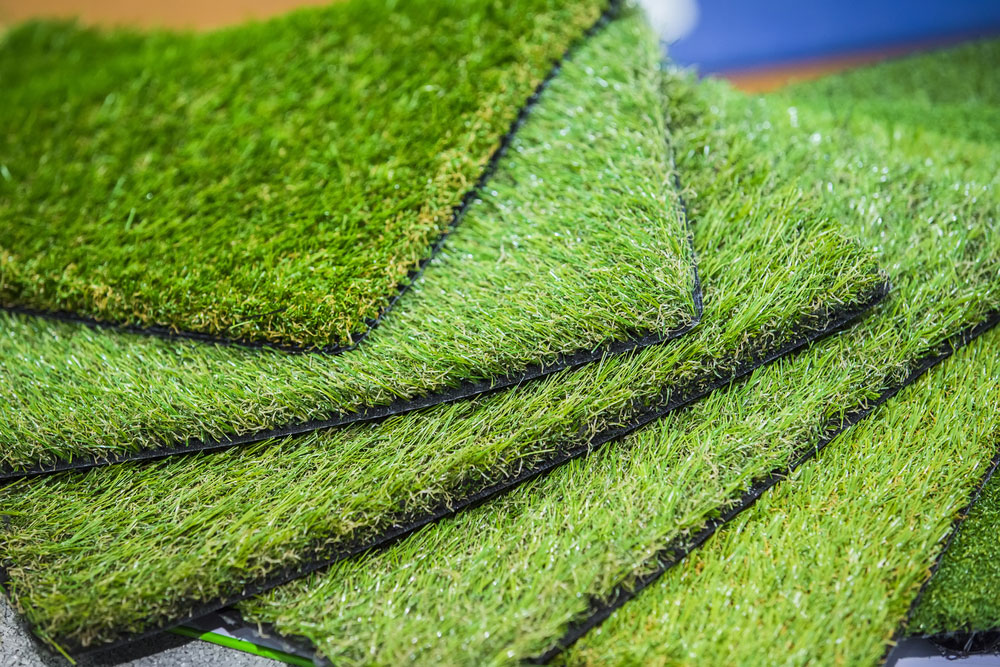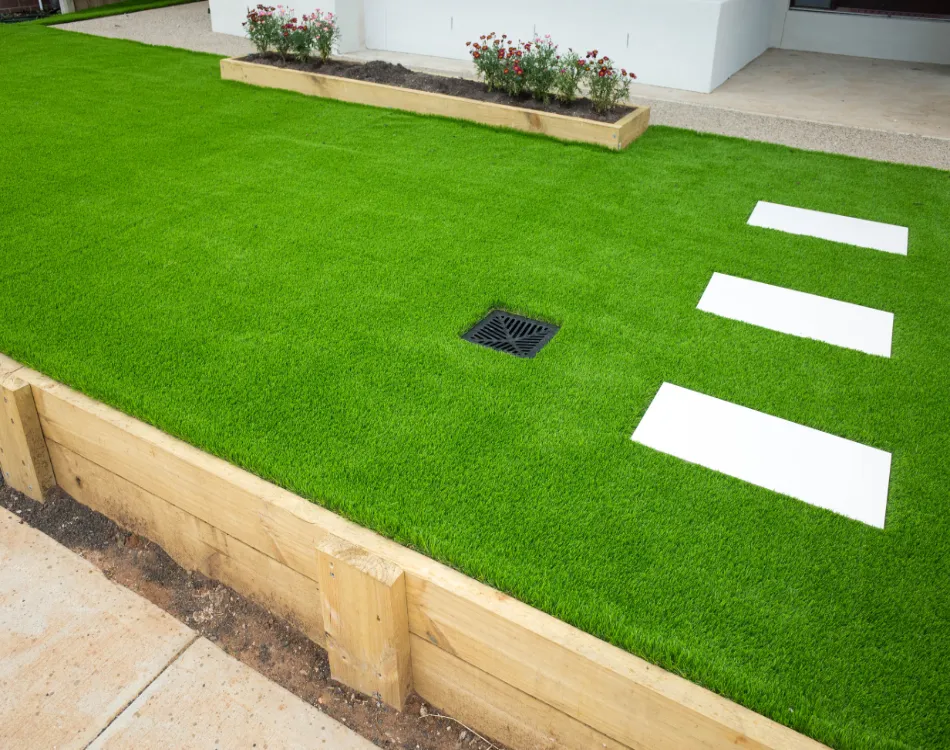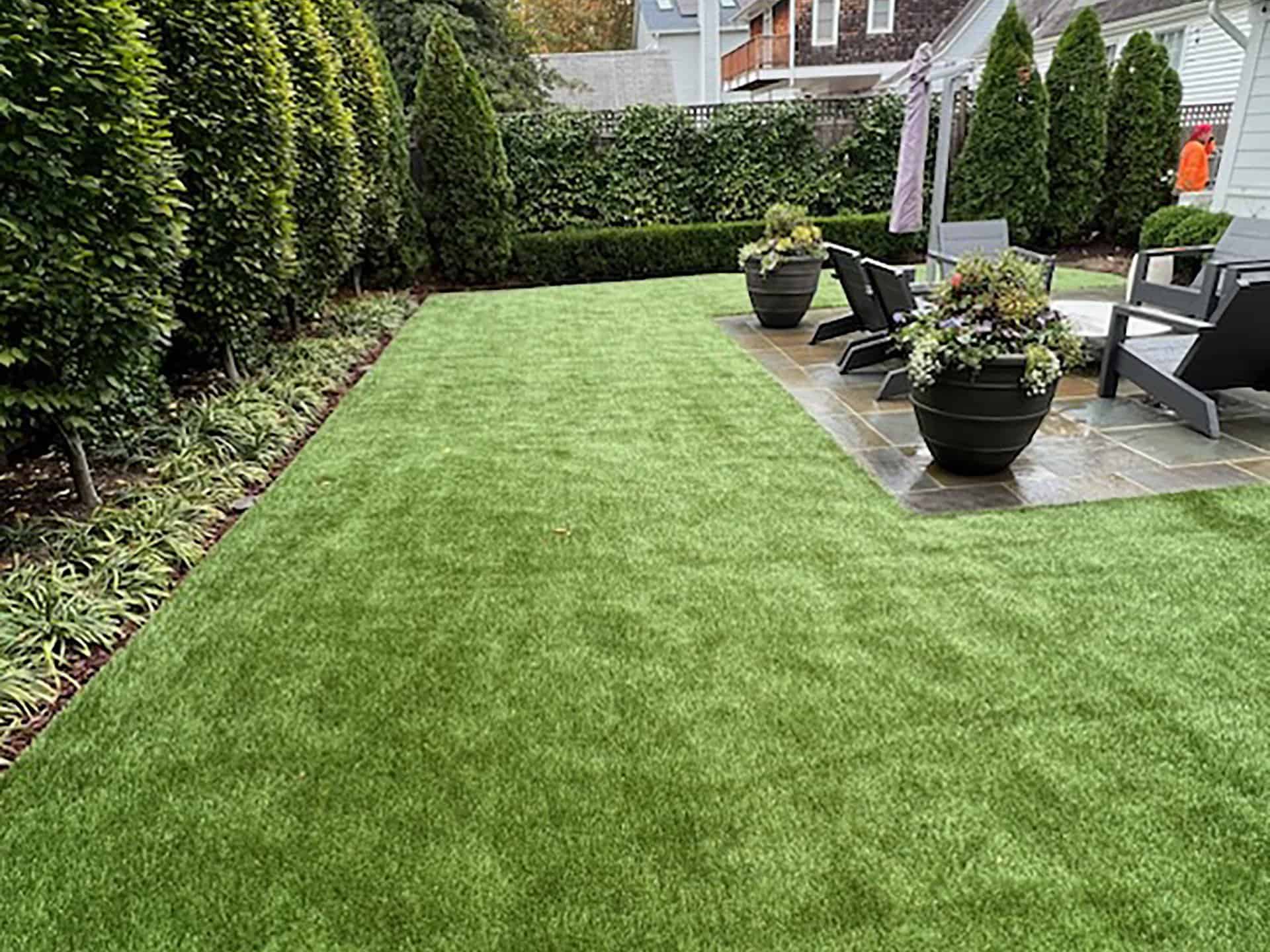See Why Homeowners Prefer Artificial Lawn for Lasting Landscape Design Practices
As home owners significantly focus on sustainability in landscape design, synthetic grass has become a compelling option to conventional lawn. Its capacity to conserve water, reduce maintenance efforts, and minimize ecological impact positions it as a useful choice for those seeking green solutions. Additionally, the aesthetic charm and convenience of artificial lawn deal with diverse layout preferences. However, the ramifications of this shift prolong beyond mere ease and visual appeals, triggering a better assessment of just how these selections influence wider environmental end results. What continues to be to be discovered is the complete range of benefits that synthetic grass can provide to property owners and the atmosphere alike.
Water Preservation Perks
One of the most substantial benefits of fabricated lawn is its duty in water preservation. In comparison, man-made lawn removes this need totally, as it does not call for watering.
In addition, the installment of synthetic grass can contribute to a more lasting landscape. Home owners can significantly decrease their water costs, permitting reallocation of sources to other environmental initiatives or household usages. In addition, synthetic grass is made to hold up against numerous weather problems without the requirement for additional watering, making it an optimal option for areas dealing with water scarcity.
The environmental advantages prolong beyond immediate water financial savings. By lowering water intake, artificial turf aids to minimize the influences of environment adjustment, maintaining crucial ecological communities that are intimidated by too much water removal. As sustainable landscaping techniques get traction, artificial lawn emerges as a responsible option for property owners seeking to create environment-friendly outdoor rooms.
Minimized Maintenance Initiatives
Man-made grass considerably lowers upkeep efforts contrasted to traditional yard lawns. With man-made grass, home owners can get rid of the time-consuming tasks associated with all-natural landscaping, such as mowing, feeding, and weeding. This not only conserves beneficial time but additionally lowers physical labor, making grass care accessible for people of every ages.
Typical lawns need regular trimming to preserve a cosmetically pleasing elevation, whereas artificial grass stays continually lavish without the need for cutting. Additionally, property owners no longer need to apply fertilizers or chemicals, which are often required to maintain all-natural lawn healthy and balanced.
Moreover, artificial turf is durable and long lasting, requiring minimal upkeep beyond periodic cleaning and washing to get rid of debris. This ease of maintenance enables property owners to appreciate their exterior areas without the consistent concern of upkeep, supplying even more time for recreation and family tasks. Inevitably, the minimized maintenance efforts linked with synthetic grass make it an attractive option for those seeking a low-maintenance, aesthetically appealing landscape.

Ecological Influence Reduction
There is a growing recognition of the environmental advantages related to synthetic grass, specifically in regards to water conservation and decreased chemical use. Traditional yards need substantial amounts of water, particularly in drought-prone areas, resulting in boosted pressure on neighborhood water resources. In contrast, synthetic grass eliminates the need for irrigation, drastically decreasing water usage and promoting sustainability.
Furthermore, conventional lawn maintenance often involves the application of herbicides, chemicals, and plant foods, which can add to dirt and water air pollution. Man-made lawn minimizes this ecological threat by calling for marginal maintenance and basically removing the requirement for damaging chemicals. This not only enhances dirt wellness yet likewise safeguards local communities from toxic runoff.
Moreover, the manufacturing of natural grass yards usually includes the use of nonrenewable fuel sources for cutting and landscaping devices, further adding to greenhouse gas discharges. By choosing synthetic grass, property owners can significantly decrease their carbon footprint connected with grass treatment tasks.
Visual Allure and Adaptability
In addition to its ecological advantages, synthetic grass supplies significant visual charm and versatility for landscape design. Property owners can attain a rich, this environment-friendly appearance year-round, removing the seasonal fluctuations typically linked with natural lawn. This regular aesthetic not just enhances the visual appeal of a building but likewise adds to a refined and properly maintained look.
Additionally, synthetic grass is available in a range of structures, shades, and designs, enabling personalization to fit private choices and design styles - Arizona turf. Whether used in property yards, industrial rooms, or recreational areas, it can effortlessly integrate into varied landscape design styles, from modern-day minimal to rich exotic setups
The convenience of synthetic grass prolongs past plain look; it can be mounted in various places, including rooftops, patios, and even indoor spaces, creating possibilities for one-of-a-kind landscape design options. Furthermore, it is appropriate for a series of activities, from kids's play redirected here locations to pet-friendly settings, supplying performance without compromising style.
Inevitably, the aesthetic allure and convenience of synthetic grass make it an attractive choice for property owners seeking lasting landscaping remedies that do not sacrifice elegance for environmental duty.

Long-Term Price Savings
One of the most compelling benefits of fabricated grass is its capacity for long-term price financial savings. Unlike natural grass, which requires normal upkeep-- including mowing, watering, fertilizing, and parasite control-- fabricated grass substantially decreases these ongoing expenses.
In addition, fabricated lawn has a life-span of 15 to 25 years, relying on its top quality and usage. This longevity decreases substitute costs, making it an extra cost-effective choice in the future. The first investment in artificial grass can often be recovered via the savings built up over time.
While the upfront expense might seem higher contrasted to sod setup, the collective savings from minimized upkeep and water usage commonly outweigh these preliminary expenses. Ultimately, the adoption of synthetic grass not just promotes a sustainable landscape design solution however additionally offers house owners a monetarily savvy choice that straightens with long-term budgeting objectives.
Verdict
Synthetic grass arises as an engaging option for sustainable landscape design, supplying considerable benefits in water preservation, reduced maintenance efforts, and lessened environmental effect. Its visual appeal and flexibility improve the aesthetic landscape while aligning with modern-day sustainability objectives. Furthermore, long-lasting price financial savings add to its attractiveness for house owners. As neighborhoods progressively focus on eco-friendly methods, the adoption of synthetic grass stands for a dynamic action toward accomplishing lasting and resistant landscapes.
Additionally, fabricated grass is designed to hold up against different climatic problems without the requirement for supplemental watering, making it an optimal choice for areas facing water deficiency. (Phoenix turf companies)

Fabricated lawn arises as an engaging choice for lasting landscaping, providing significant advantages in water preservation, lowered upkeep efforts, and decreased environmental impact.
Comments on “Tailored Turf Installation Phoenix AZ for Residences, Companies, and Recreational Spaces”